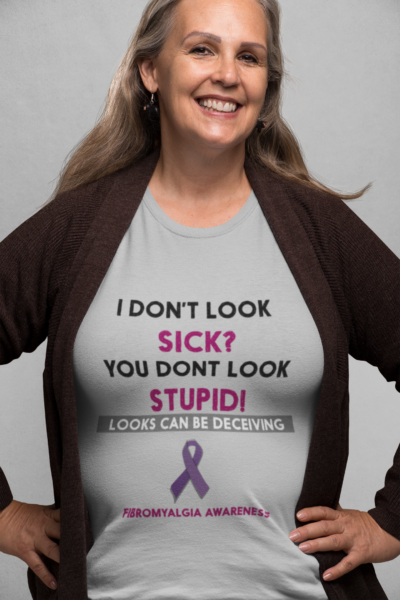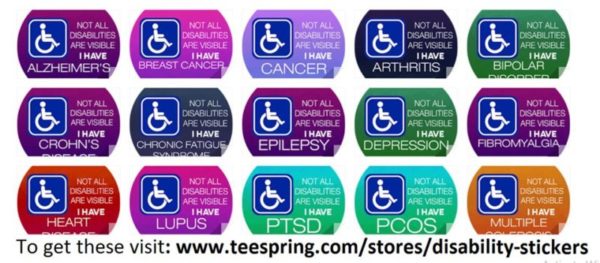In the October issue of Vogue, the 32-year-old pop star opened up about her struggle with fibromyalgia, a condition that affects the nervous system and causes pain throughout the body.
“I get so irritated with people who don’t believe fibromyalgia is real,” the singer said. “For me, and I think for many others, it’s really a cyclone of anxiety, depression, PTSD, trauma, and panic disorder, all of which sends the nervous system into overdrive, and then you have nerve pain as a result.”
“People need to be more compassionate. Chronic pain is no joke. And it’s every day waking up not knowing how you’re going to feel.”
Gaga, born Stefani Germanotta, revealed she suffers from the debilitating condition last September, just before the release of her documentary Gaga: Five Foot Two.
“I wish to help raise awareness & connect people who have it,” she tweeted.

Click Here to Visit the Store and find Much More….
For Gaga, the pain has been so bad at times that she’s been unable to perform. In September 2017 she was hospitalized due to “severe pain” and canceled her upcoming concerts.
There’s a lot of misunderstanding around fibromyalgia because up until recently, the condition wasn’t widely accepted as a real illness, said Dr. Mary-Ann Fitzcharles, an associate professor of medicine in the Division of Rheumatology at McGill University.
Many believed that symptoms of fibromyalgia were all “in the head” of people dealing with the illness since they often look healthy otherwise.
“It is now a completely recognized condition, no question,” Fitzcharles said. “We’ve moved away from the notion that all patients have a mental illness.”
What is fibromyalgia?
Fibromyalgia is a condition in which people feel chronic pain in their muscles and tendons, often along with other symptoms like sleep problems, headaches or mood disorders, Fitzcharles told Global News.
According to the Arthritis Society of Canada, fibromyalgia affects around two percent of Canadians, although the majority of sufferers (80 to 90 percent) are women. People between the ages of 20 and 50 are most at risk for developing the condition, the Arthritis Society reports.
There is currently no cure for fibromyalgia, but symptoms can be managed through treatment.
What does fibromyalgia feel like?
Symptoms of fibromyalgia vary but include fatigue, disrupted sleep, cognitive dysfunction, irritable bowel syndrome, mood disorders like anxiety and depression, and migraines. There’s one common thread: pain.
“For more than 30 percent of people with fibromyalgia, even just a gentle touch and stroking the skin is perceived as being unpleasant,” Fitzcharles said.
She further explained that for people with fibromyalgia, their painful symptoms indicate that there’s a disconnect between their bodies and nervous systems.
“It’s as if the nervous system is fired up. In many patients, we see evidence of something we call hypervigilance,” she said. “So people are overly sensitive to loud noises, busy environments, and intensive light.”
What causes fibromyalgia?
Medical experts are unsure of the exact cause of fibromyalgia, but the illness can often be traced back to a traumatic event, Fitzcharles said.
“One-third of people will say they were in completely perfect physical health, and then there was some [significant] event,” Fitzcharles said. “It might have been a severe viral illness, a traumatic event, like a motor vehicle accident and broken bone, [or] a severely stressful physiological event that seems to trigger the onset.”
For the other two-thirds of people living with fibromyalgia, Fitzcharles says the condition seems to come out of the blue. There is an increased chance of developing the condition if your family has a history of fibromyalgia.
Why is fibromyalgia hard to diagnose?
Fibromyalgia has puzzled doctors for years. It is hard to diagnose because there is no one standardized test for the condition, and there’s also no test to confirm the diagnosis. Plus, people’s symptoms can change frequently, and again, those living with fibromyalgia often look healthy.
“The patient looks absolutely normal. There’s no swelling, there’s no fever, there’s nothing to see. So even family and friends have difficulty understanding the process,” Fitzcharles said.

Because it’s hard to identify, she says it typically takes patients five years before they’re properly diagnosed.
“What physicians need to do [to diagnose it] is take a good [medical] history from the patient, and examine the patient to make sure that one of the conditions that can [appear] as fibromyalgia is not present,” she said.
Then, doctors will do minimal testing to ensure there’s no other underlying illness. “We really recommend against doing excessive testing on patients, like excessive x-rays and MRIs.”
How do you treat fibromyalgia?
Fitzcharles says that the condition can be treated with drugs, but most patients control their illness with self-managed techniques, including a healthy lifestyle, proper sleep, and minimizing stress.
“Probably the intervention that is most successful is a regular program of comfortable physical activity,” Fitzcharles said. “Non-pharmacologic management is exceedingly important.”
If a patient does require medication, Fitzcharles said it’s important to find drugs that help alleviate pain — not contribute to it.
“Unfortunately, most of the medication we use has considerable side effects, and many of the side effects can be similar to the symptoms of fibromyalgia,” she said. “So if a patient says they have terrible difficulty with sleep and [significant] pain, if we can choose a medication that can impact sleep and pain, that’s the way we go.
Source: healthcure247.com
[mailpoet_form id=”2″]


I have been working to change legislation on having fibro covered by disability. I had been diagnosed 7 1/2 years ago with a severe case and have tried to work many different jobs to no avail. This adds to the depression and anxiety that go along with fibro because you feel worthless and unable to pull your own weight. I really don’t understand why it is not covered like things such as arthritis, lupus, etc. as there are many of the same symptoms as far as pain and the ability to move. I feel it is because of the idea that it is a “made up” disease and a wide array of symptoms/severity. It would need to be driven by the severity of the symptoms as to who would qualify and who wouldn’t. I would love some input/help on what more I could do to move forward with this. I have written congressmen/legislature people, etc., but no one would put it up for a vote in the legislative process. Thank you Lady Gaga for speaking out on this subject!
Wow! I live in Canada and have been able to claim my fibromyalgia as a disability.
Thank you for standing up for those of us who can’t. To those that don’t believe you , I say,” let them”